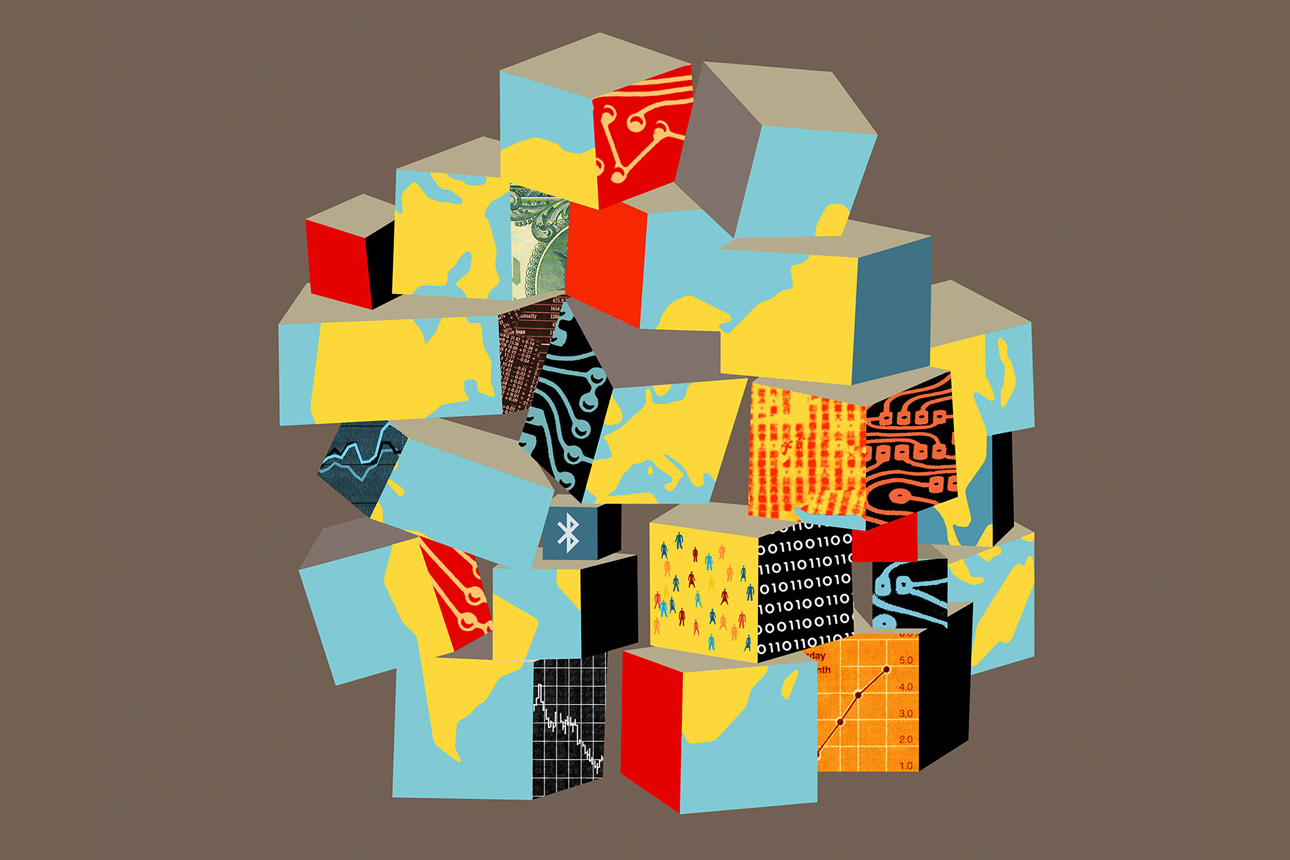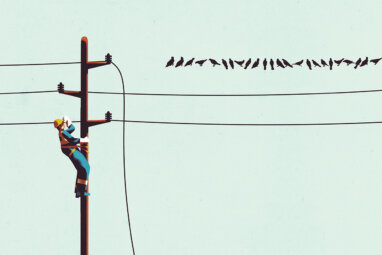The Perfectly Imperfect Start of Disruptive Innovations
The history of the transistor illustrates the disruptive potential of new innovations to move from niche to mainstream.

Topics
Column

Otto Steininger/Ikon Images
“Is such-and-such innovation disruptive?”
It’s a question I’ve been asked countless times. At a recent workshop, for instance, a participant I’ll refer to as Sue asked about “cultivated meat,” a broad term for meat that is produced in a laboratory. Some analysts have touted the disruptive potential of artificial alternatives to traditional farm-produced meat. For example, a 2023 California Management Review article titled “Disrupting the Plate: Cultured Meat Technology” asserted that “incumbents face ‘the innovator’s dilemma,’ where they wrestle with participating in the new market opportunity or protecting the status quo.”
I try to avoid directly answering the question of whether a given innovation is or is not disruptive, following the guidance of my mentor, Clayton Christensen (who, of course, wrote The Innovator’s Dilemma). He believed in giving someone a theory or model and providing an example from a different industry. The inquirer would then answer the question themselves, building their conviction around the answer and strengthening their ability to answer such questions in the future.
To answer Sue, my first task was to clarify whether she was asking about disruption as defined by Christensen or by the dictionary. That distinction matters. The basic dictionary definition references “a disturbance” or “a radical change.” Christensen used the word more specifically. His research found that there was a particular type of innovation that had the potential to drive significant industry change. By making the complicated simple and the expensive affordable, a Christensen-style disruption (CSD, for purposes of this article) has massive growth potential. But his research showed that, historically, growth had been captured not by the market-leading incumbent but by a new entrant.
The dictionary version of disruption presents its challenges but generally can be handled by existing structures and systems. A CSD, on the other hand, requires active management and careful organization design — expending organizational energy that could be used for other purposes. Sue said she was particularly interested in the potential impact of cultivated meat on major food processors such as Tyson Foods and Cargill. We agreed to evaluate it as a CSD.
A disruptive innovator tends to start by serving a customer who finds the disruptive innovation to be perfectly imperfect.
The next step was to dive into Christensen’s famous disruptive innovation model, which holds that companies innovate faster than people’s lives change, creating opportunities for a disruptive innovator to take root with customers looking for simpler, more affordable solutions.1 The market-leading incumbent prioritizes playing today’s game better over playing tomorrow’s game differently and gets caught flat-footed as the disruptive innovator improves its offering and appeals to broader customer segments.
It’s important to evaluate where a would-be disruptive innovator starts. A disruptive innovator tends not to start squarely in the mainstream market but by serving a customer who is satisfied with a limited product and, in fact, finds the disruptive innovation to be perfectly imperfect.
The Story of One Perfectly Imperfect Innovation
Let’s look at a classic CSD: the transistor. William Shockley, Walter Brattain, and John Bardeen shared the Nobel Prize for their pioneering work developing the transistor at Bell Labs in the late 1940s. The project’s original intent was to develop a technology to supplant the vacuum tubes that powered communications networks — which did happen, eventually. But the transistor didn’t smoothly transition into an existing market. Rather, it ushered in the modern communications age in a surprising way.
Like all CSDs, the transistor was imperfect. That was, in fact, part of its design. Glass insulates, which means no electricity flows through it. Copper conducts, which means electricity flows through it unabated. The semiconducting material in transistors (originally germanium, now silicon) is an imperfect conductor. With the right manipulation, then, it can control an electrical current.
Sensitive to environmental conditions, early transistors weren’t totally reliable. As Jack Morton, who led the development of solid-state devices at Bell, said, “In the very early days, the performance of a transistor was apt to change if someone slammed a door.”2 And transistors couldn’t match the raw power provided by vacuum tubes. Plus, they couldn’t simply be dropped into existing products; those products would have to be completely redesigned around the transistor.
It is therefore perhaps not surprising that companies that manufactured televisions, floor-standing radios, and networking equipment licensed the transistor but proceeded cautiously. But the transistor gained a hold in a market no one had considered: hearing aids.
At the time, hearing aids were expensive and uncomfortable, powered by packs attached to wearers’ belts. Vacuum tubes would heat up uncomfortably, eventually burning out and requiring replacement. The market was minuscule — which made it a wonderful foothold for a CSD.
Like all Christensen-style disruptions, the transistor was imperfect. That was, in fact, part of its design.
Hearing aid companies began using transistors as soon as it was commercially possible to do so. They were aided by a historical quirk: Alexander Graham Bell, the progenitor of AT&T, which housed Bell Labs, was passionate about helping the hard of hearing, and Bell Labs offered royalty-free licenses to hearing aid manufacturers. Hearing aid companies therefore had an easy way to play around with the technology.
In late 1952, Sonotone started selling $229.50 hearing aids (about $2,500 in today’s terms) with one of three vacuum tubes replaced with a transistor made by Germanium Products. Acousticon then introduced a tubeless single-transistor model for $74.50 (about $900 in today’s terms). Raytheon aggressively pursued this market, creating the first mass-produced transistor. In a few short years, more than 95% of hearing aids used transistors.
It was a perfectly imperfect fit. The market demonstrated how the transistor enabled the development of smaller, cheaper products with significant growth potential. Its lower power consumption decreased annual battery cost from $100 to $10. The market for hearing aids expanded dramatically. The transistor next appeared in small, portable radios. Sony ultimately dominated that market. The rest is history.
Chris Dixon from venture capital firm Andreessen Horowitz says that the best innovations are good ideas that sound like stupid ideas when you first hear them. (A website that lets strangers sleep in your spare room? Sure.) Find a perfectly imperfect foothold, hone a business model that makes an incumbent response challenging, and improve: It is the time-tested recipe for disruptive success.
Applying the Tenets of Disruptive Innovation
After going through the basics of the disruptive innovation model and describing how disruptive innovators often find a perfectly imperfect foothold, I asked Sue whether she thought cultivated meat would prove to be disruptive to major food processors.
“Well, it is certainly imperfect,” she said. Indeed, cultivated meat has its limitations. It’s much more expensive than farm-grown meat, and its taste profile doesn’t match that of natural products. But it has unique benefits as well. Lab-grown meat has the potential to be much better for the environment, given that farm-grown meat requires significant amounts of land, food, and water. (Cows also emit methane, which contributes significantly to global warming.) And, of course, cultivated meat does not require that an animal be slaughtered.
“But I keep thinking about how transistors started with hearing aids. I just don’t see an equivalent for cultivated meat,” Sue said. There are customer groups that would be willing to pay price premiums for the specific benefits cultivated meat offers, but that felt to Sue more like a niche than the path followed by the transistor. And generally, incumbents like to target customer segments willing to pay price premiums for products.
We therefore weren’t surprised to see that Tyson Foods and Cargill are both investing in cultivated meat. Of course, as technology improves such products’ taste and lowers costs, there will be losers. It’s not hard to imagine a world where there’s a sharp drop in the number of cattle and swine farms. But Sue said her view is that cultivated meat will not have a disruptive impact on the mainstream incumbents.
It felt to me like a perfectly imperfect answer.
References (2)
1. Christensen’s basic disruptive innovation model is the two-dimensional version he first presented in his 1997 book, “The Innovator’s Dilemma.” In “The Innovator’s Solution,” written by Christensen and Michael Raynor and published in 2003, the model added a third dimension and discussed differences between low-end disruptions that transformed existing markets and new-market disruptions that created new ones. The basic process — find a foothold, hone a unique business model, improve and grow — holds across both types.
2. M. Riordan and L. Hoddeson, “Crystal Fire: The Birth of the Information Age” (New York: W.W. Norton, 1997).









Comment (1)
Stuart Roehrl